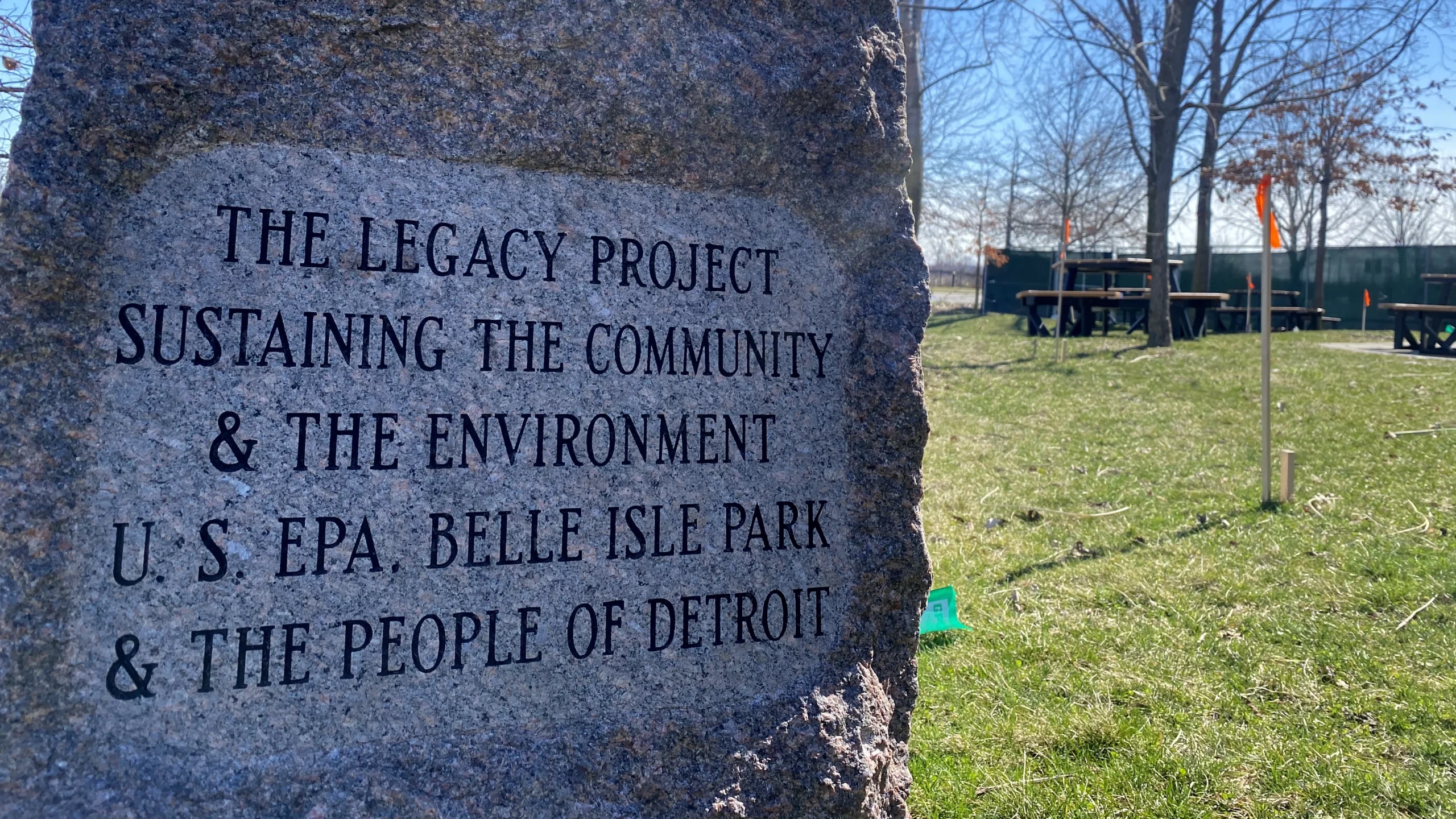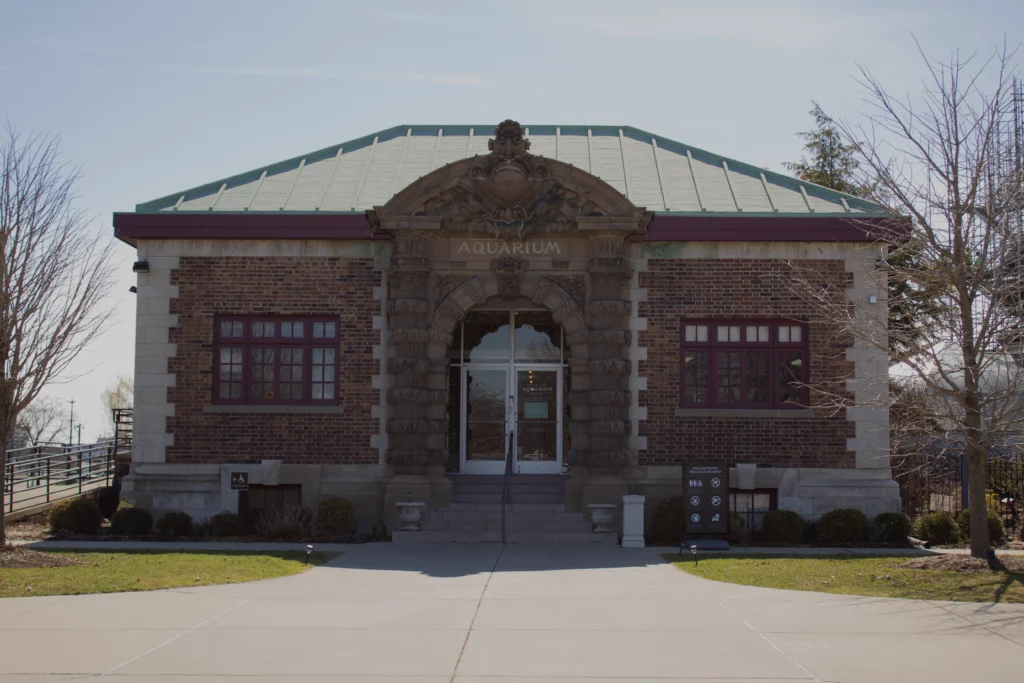Under state control for the last ten years, Belle Isle in Detroit has seen substantial improvements and the return of some of its most beloved attractions. How did they do it?

In the middle of the Detroit River, an island sits snug against the border between the United States and Canada. A soft breeze flows over the island’s trees, grass, and wildlife. The sound of water can be heard subtly crashing against the rocks. Not far away near the center of the island, there’s a general commotion as pedestrians walk up and down the paved path. All of this is happening on Belle Isle in Detroit, Michigan.
Belle Isle Park is the largest city-owned island park in the country with 985 acres of land. Covered with wooded areas, miles of trails, and other tourist attractions like the Belle Isle Aquarium, the island is a one-of-a-kind location that has evolved into a multi-use, popular hangout spot for Detroit residents and tourists alike.
Connected to downtown Detroit by a bridge, visitors to the island can enjoy a variety of activities, like exploring the scenic trails in the heart of Belle Isle. Most of the island is dedicated to trails and wildlife, but there’s much more. There’s a sandy beach that’s popular during the summer and a large open area for playing soccer, volleyball, baseball, tennis, and basketball. At dusk, guests can gather at Sunset Pointe to watch the sun set over Detroit. It’s a beautiful park, but things weren’t always this picture-perfect for Belle Isle.
A little over a decade ago, Detroit faced serious money troubles. This ultimately led the city to declare bankruptcy in 2013. Since Belle Isle was a city-owned park, the city didn’t have adequate resources to run the facilities. Existing buildings were shuttered and neglected for years. Take the Belle Isle Zoo, for example. It closed down in 2002 and still stands at the center of the island to this day, collecting dust for more than 20 years.
After Detroit declared bankruptcy, management of the park was transferred to the state. The Michigan Department of Natural Resources now manages the park and has poured considerable funding into it, gradually making substantial improvements and rectifying years of negligence to one of the United States’ most unique public parks.
The Glory Days of Belle Isle
Before being purchased by the city, Belle Isle was known as “hog island,” due to much of the island being devoted to grazing land for livestock.
The history of the park goes back all the way to 1879, when the city of Detroit bought the land and began developing it into a public park. Detroit was growing rapidly and was looking to expand. City officials saw the success of Central Park in New York City and wanted a park of their own. To craft the landscape of the park, the city hired Frederick Law Olmsted, the designer of New York City’s Central Park.
Olmsted created a plan for the park, but not all of his designs were adopted. His original plan was seen as too elaborate and expensive to be fully implemented. However, some of Olmsted’s proposals were built, including a central walkway for pedestrians and minor landscaping to create an open grassy area. The rest of the island would remain relatively untouched to preserve its natural beauty. Olmsted also envisioned a system of underground pipes that would lead into canals, but the city thought that these pipes would be too expensive to build, so it never came to fruition.

In the early 1900s, more buildings were constructed around the island and the park slowly developed more amenities for visitors. Among them were a botanical garden, aquarium, and conservatory, which were completed in 1904.
During this period of development, a golf course, marina, and ceremonial fountain were also built. Belle Isle even had a short-lived amusement park named Electric Park, which closed in 1909 after financial struggles and legal battles over the park’s ownership.
In 1923, the bridge connecting the city of Detroit and Belle Isle was completed. Before the bridge, a ferry service taxied people to and from the island.
Throughout most of its history, the park was owned and managed by the city of Detroit. Around the turn of the 21st century, Detroit’s financial situation slowly worsened, and there was less and less money to keep Belle Isle beautiful.
In the wake of Detroit’s economic strife, the facilities on Belle Isle fell into disrepair. Buildings that stood on the island for almost 100 years began to deteriorate and Detroit didn’t have the funds to fix them. Just like the former Belle Isle Zoo, the island’s deserted boathouse is also showing its age with chipped paint and brick.
Tensions over Detroit’s economic state slowly got worse, until it all came crashing down in 2013, when it fell into bankruptcy.
The city no longer had the resources to run Belle Isle, so they made the decision to lease the land to the state government. This lease is still in effect, and modern-day Belle Isle is managed by Michigan’s Department of Natural Resources (DNR).
“The city absolutely couldn’t maintain its parks [or] recreation system throughout the 1980s, the 1990s [and] into the 2000s,” says Belle Isle Conservancy President Maud Lyon.
Lyon is the interim president of the Belle Isle Conservancy. Founded in 2012, the conservancy is a nonprofit born from the merger of four smaller nonprofits: Friends of Belle Isle, Belle Isle Botanical Society, Friends of the Aquarium, and The Belle Isle Women’s Committee. Since merging into one organization, it has become a vital part of the island.
Under New Management
As a part of its plan to revitalize Belle Isle, the Michigan DNR knew they’d need to invest some money into the park. But they had no way of knowing how much that would end up being.
“As part of the lease, we agreed to invest over $20 million in the first four years in that infrastructure, but we have far exceeded that,” says Amanda Treadwell, an urban area field planner for the Michigan Department of Natural Resources. “The statewide investment in the park is about over $140 million this fiscal year.”
That $140 million investment doesn’t include the additional $200 million in deferred maintenance required on the park and its facilities. It became clear that Belle Isle was going to be an expensive park to fix. The Michigan DNR would need the help of local organizations.
The Michigan DNR runs the park in conjunction with a handful of groups who have facilities on the island. The Coast Guard, Detroit Historical Society, Detroit Zoo, Detroit Yacht Club, and the Detroit Rowing Club all have facilities based on Belle Isle, but none have an impact like the Belle Isle Conservancy. And it’s only a small nonprofit with only 14 staff members.
In addition to the aquarium, Belle Isle Conservancy is responsible for managing many other popular aspects of Belle Isle. Located right next to the aquarium is the Anna Scripps Whitcomb Conservatory, which is also run by the Conservancy and currently closed for renovations.
They also organize events like Polish The Jewel and the annual Garden Party. One of their most important events is the island cleanups, which are part of a project named Keep Belle Island Beautiful.
“We recruit about 2,000 volunteers a year who literally do island cleanups,” Maud Lyon says. “We have a big one coming up every spring in April.”
In 2023, volunteers collected a total of 8,936 pounds of trash on Belle Isle over a series of cleanups. One of the larger cleanups of the year is the Spring Cleanup in April, which occurs around Earth Day every year.
The Belle Isle Conservancy is also behind some of the island’s most popular attractions. In a previous survey detailing how visitors to Belle Isle were spending their time, 61% of respondents answered that they visited the aquarium.
“Our signature achievement as the Belle Conservancy is this aquarium,” Lyon says..
In 2005, when the city of Detroit closed the Belle Isle Aquarium amid its budgetary restraints, it was the longest continuously run aquarium in the United States. It didn’t reopen until 2012, under the management of the Belle Isle Conservancy.
Today, the aquarium still stands strong as one of Belle Isle’s most popular attractions. Guests to the aquarium can see a wide variety of saltwater and freshwater fish under the aquarium’s iconic green-tiled ceiling. The aquarium’s dimly-lit interior makes it feel like you’re at the bottom of a pool.

Without the Belle Isle Conservancy, it’s unclear whether the aquarium would have re-opened. Running an aquarium isn’t cheap, and Detroit originally closed the aquarium because of the high cost of running it. Because it’s a private organization, they can’t use tax dollars to fund the aquarium. Around 40% of the Conservancy’s money comes from private donors and corporate grants. Many of the aquarium’s staff are also volunteers.
“We can be nimble and raise private dollars in ways that the government entity can’t. And we can do things like take on special projects like reopening the aquarium that…would never have been on the priority list for the DNR in the last 10 years because they had the whole park to be able to look after,” Lyon says.
With the help of the Belle Isle Conservancy, changes have gradually been taking place on Belle Isle, but most of the changes aren’t too exciting so far.
“There’s been a ton of really good background work including things like getting the bathrooms to work, just basic kinds of stuff,” Lyon says.
What’s Next for the Isle
Belle Isle is undoubtedly in a better spot than it was ten years ago, but the Michigan DNR isn’t satisfied just yet. The organization is completing a study that will inform their plans for the next ten years of improvements to Belle Isle.
“We are wrapping up a multimodal mobility study. The goal of that is to improve access to the park,” Treadwell says. The study collected data from a variety of sources including traffic counts, aerial photographs, and input from organizations operating on the island. The data shows the Michigan DNR how pedestrians and vehicles traveled around the island, finding common points of congestion.
It has influenced a wide range of proposed changes to the island including updated signage, and improved walkways for hikers and bikers.
Improvements won’t happen overnight, but the Michigan DNR, along with the help of local organizations, is making great strides to improve the park for visitors. There’s a long way to go, but under the leadership of the Michigan DNR, the park is inching towards the goal of making the park a wonderful place for everyone.
